Major developments in the Matsés Indigenous Mapping Initiative, Healing Forest Medicinal Agroforestry and more!
Table of Contents
Two elder shamans and Encyclopedia authors incapacitated by snakebite in advance of inter-village meeting of the Matsés chiefs and elders
Bringing together Matsés from fourteen different communities, some of whom have to travel for three days, is never easy. We confirmed that the formal invitation letters had been received by each village. We then made sure that the essential gasoline and food supplies for the conference were waiting for us in Colonia Angamos. Colonia Angamos is the remote settler community and Peruvian military outpost on the banks of the Javari river that is the gateway to Matsés territory. When our Peruvian Air Force flight took off from Iquitos for Angamos on schedule, a not too common occurrence, we could not help feeling optimistic. We would have five days in Angamos to pull everything together before going on to meet everyone at the conference at Remoyacú. Our auspicious start came to an abrupt end as we were checking to see if key participants were indeed en route to the conference and received word that Roberto Tumi Nëcca Unan, one of the shamans and an author of a chapter of the Matsés Traditional Medicine Encyclopedia, had been bitten by a bushmaster snake. The circumstances surrounding the bite would only become clear to us later. Roberto was bitten as he was hunting at a camp two hours upriver by boat from his village of Remoyacú and a further three hours walking into the forest (Matsés pace). As he went off the trail to retrieve a peccary, he was struck in the upper leg by a large bushmaster. Roberto was able to walk about 10 or 15 paces before collapsing. His Matsés hunting companion returned to Remoyacú to seek assistance. For us, as the evening drew on, the situation remained murky as lines of communication through radio were marginal. His condition was serious and during the night there were conflicting reports about his status and location, even a rumor that he had passed. As we made attempts to coordinate Roberto’s evacuation by boat from Remoyacú to the medical outpost in Angamos, reports came in that Arturo Tumi Nëcca Potsad had also been bitten by a snake! Arturo, the famed Matsés warrior and shaman from the village of Buenas Lomas Nueva on the river Chobayacú, was bitten while out in the forest collecting medicinal plants. Arturo had been bitten by a jergón (fer-de-lance, Bothrops atrox) the same day Roberto was bitten by a bushmaster. At that moment it seemed incredible, so mathematically improbable, that two of the five elder healers and original Encyclopedia authors were bitten on the same day by venomous snakes. Further reports came in confirming the reality and gravity of the situation.
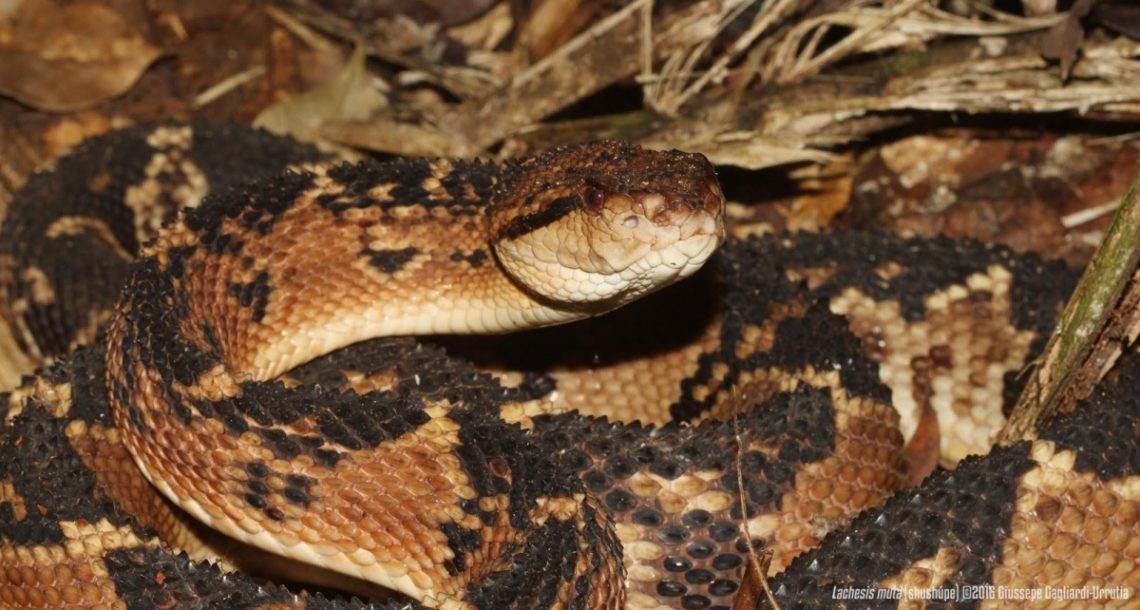
A cryptic inhabitant of the primary forest, the bushmaster (Lachesis muta) is rarely seen but has the potential to deliver a devastating bite. ©Giussepe Gagliardi-Urrutia
Late the next evening, Arturo arrived in Angamos, huddled in a blanket inside a canoe. We carefully lifted him from the canoe and carried him to the health post. A couple of hours later, near midnight, Roberto arrived from Remoyacu after being brought out of the forest by a group of Matsés youth and taken downriver to the waiting Health Ministry boat. He was conscious but with great swelling of his left leg. The height of the bite on his leg and distance between the fang puncture marks indicated that it was a massive snake, described by his Matsés hunting companion as having the girth of a man’s arm.
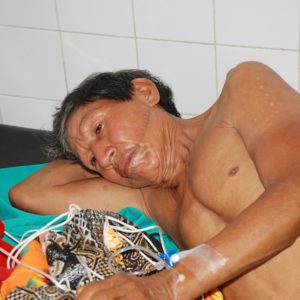
Matsés elder and warrior Arturo recovering in the Angamos health outpost from a fer-de-lance bite. © Acaté
Here in a small poorly ventilated room in the remote health post of the frontier town, 40% of the Matsés plant masters represented in the Encyclopedia lay incapacitated. Fortunately, Acaté President Chris Herndon is also a physician and over the next three days he led our efforts to assist the staff at the outpost to work within the challenging resource constraints and limited facilities. The gravity of their condition required constant attention and close supportive care over the days that followed. Even though Roberto survived the initial envenomation, the swelling and tissue damage left us concerned he would develop a complicating infection. The swelling in Arturo’s foot was comparatively less severe than Roberto’s, but an insidious complication from the virulent jergón (Bothrops atrox) venom had set in. On his arrival at the health outpost a worker had administered an intramuscular injection of vitamins and antibiotic. A day later, this small injection site began spontaneously bleeding. It was profuse and uncontrollable for hours, indicating an underlying and dangerous coagulopathy as an effect of the snake’s venom. Although he had lost a shockingly large amount of blood for such a small wound, the real concern was the potential risk for a fatal intracranial hemorrhage. By this time, fortunately, a vial of antivenin was secured and administered to counteract the effect of the venom. Once their conditions stabilized, Arturo and Roberto both requested that we proceed with the conference in Remoyacú, scheduled to begin soon. Despite being gravely ill, the strength and resilience of these two great Matsés elders was inspiring. Roberto was particularly disappointed as he had put so much effort into the meeting’s preparation and was looking forward to showing off the medicinal agroforestry work he had completed with his apprentices. He would have been able to participate in the meeting, he said, if only he had been stung by a scorpion and not bitten by a bushmaster. With much trepidation and an emergency plan in place in case of further complications, we set off for the conference more determined than ever to facilitate the transmission of these plant masters knowledge to the next generation and to help the Matsés with their health care resources.
Questions and Answers

Opening day at the inter-village meeting in Remoyacú © Acaté
The conference was scheduled for three days with Wilder Gonzalez Flores, the elected High Chief of the Matsés, presiding. The leaders of each of the 14 Matsés villages were present along with the Matsés leadership council and many Acaté project participants. Acaté was represented by Felipe Bai, Segundo Reyna, William Park, David Fleck, and Christopher Herndon, bringing the total number of attendees to more than fifty. We wanted to make sure that all the participants, many being newly elected village chiefs, were up to date on our projects and in agreement with our philosophy before getting into the detailed planning for the upcoming year. Acaté explained our three core operating pillars, namely, sustainable economy, traditional medicine, and regenerative agriculture, and how each is designed to maintain Matsés independence and self-sufficiency. We explained that these very conferences are where our initiatives originate and that each initiative is intended to address a specific need of the Matsés. Finally, we emphasized how Acaté operates with complete transparency and by total consensus, never in a top-down manner. Knowing many Matsés had questions, we decided to begin with an open forum of questions and answers before launching into the meeting agenda. Not surprisingly, many of their questions were concerning financials and fundraising, as the Matsés have been perennially disappointed by large organizations promising big projects and delivering small outcomes. There have been many well-funded international initiatives for which only a tiny percentage of the funds ultimately trickled down to the Matsés communities for projects. Moreover, the Matsés frequently complain about seeing their pictures and videos posted on the internet and social media by organizations claiming to ‘work’ with the Matsés. These organizations actively solicit donations for campaigns but have little to no ground presence or even contact with the Matsés.
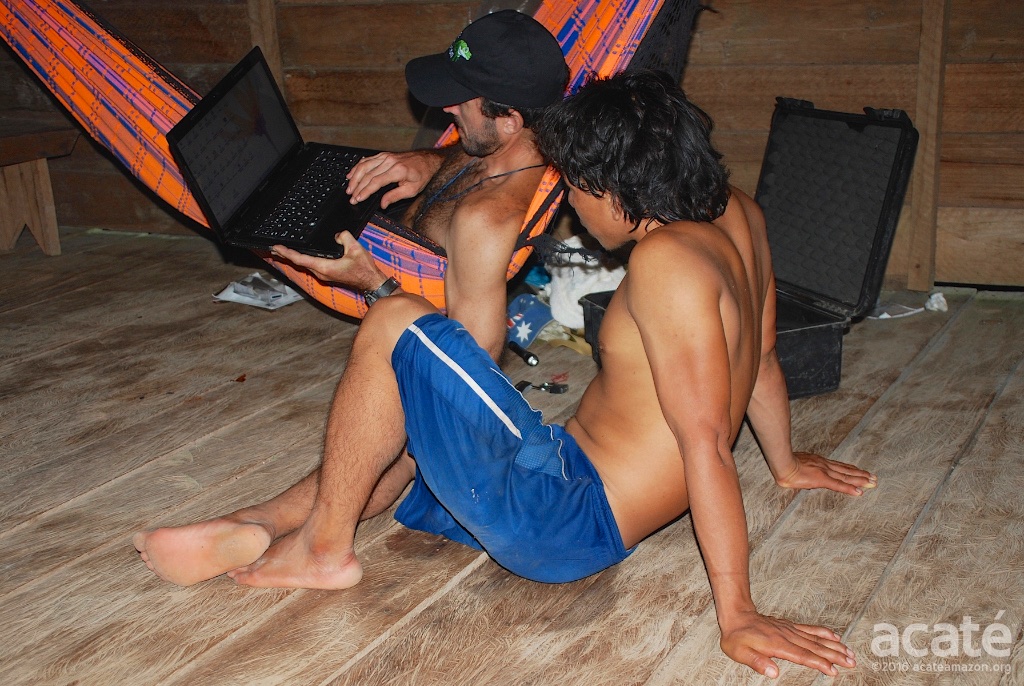
Dr. David Fleck teaching Matsés sub-chief Felix Tümi Mënquë on the use of a laptop. Acaté is supporting the training of several Matsés in basic computing and word processing, thus helping to capacitate the Matsés with a vital skill set.© Acaté
The discussion of financial inputs and expenditures was complex across cultural divides but it seemed clear to all present that while Acaté operates on a shoestring budget, it is with transparency and that all our funds are utilized in a manner directly benefiting the Matsés communities.

Plans for next year’s projects being outlined by conference participants, Acaté Co-Founder Bill Park. ©Acaté
The Matsés high chief commented that this was the first time any organization had been willing to publicly present a breakdown of operating budgets and funds. The Matsés are interested in projects that include all two thousand Matsés in Peru. We agreed that if we had the funding, this would be a good idea, and pointed out that since our founding, Acaté has realized 100% of our commitments. The Matsés understand our budgetary constraints and appreciated the urgency of the work due its importance and the increasing age of the elders. Thus we reached our first accord of the conference; that Acaté would continue to work hard to find more funding to expand the projects and the Matsés would continue to achieve outstanding results. We next turned our attention to reviewing current projects and to develop a work plan for the coming year.
Matsés Traditional Medicine Encyclopedia

Before Acaté’s initiatives, none of the remaining elder Matsés shamans had apprentices to pass on their ancestral knowledge of the rainforest accumulated over countless generations. ©Acaté
The first Acaté core pillar we discussed was Traditional Medicine. There was universal agreement that the Matsés Traditional Medicine Encyclopedia is an extraordinary accomplishment. The Encyclopedia is a 511 page hardbound, beautifully illustrated volume, written entirely by the Matsés in their own language and from their own villages. An additional ten copies of the Encyclopedia were printed and distributed at the meeting to Matsés leaders and elders who had not yet received a copy. The pride seen in elders and youths alike while reading through the volumes was moving. Once everyone was up to date on the Encyclopedia project we opened the floor to nominate candidates to author the next volume. Matsés would suggest a name and the strength of the candidacy was determined by consensus and voice approval of the assembled leaders, elders, and conference participants. It was also agreed that the current makeup of the chapter teams and payments were fair. In this manner we generated the teams and timeline for the next volume of the work. Roberto Tumi and Arturo Potsad were nominated and enthusiastically selected by the assembly.
Matsés Indigenous Mapping Initiative
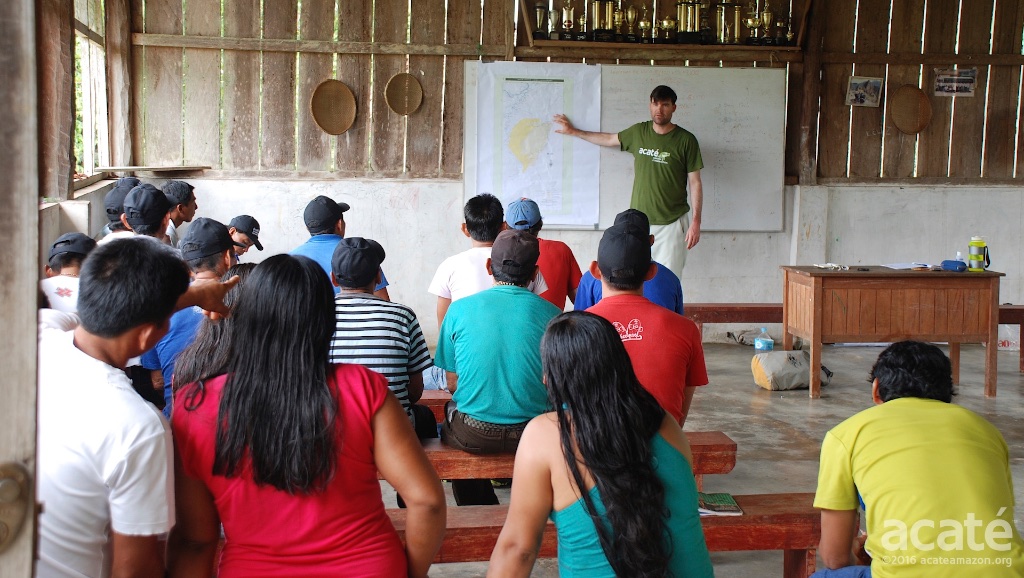
Acaté Co-Founder Chris Herndon opens the second day of the conference with the Matsés Indigenous Mapping Initiative © Acaté
The second day of the conference opened with discussions of the Matsés Indigenous Mapping Initiative. The landmark initiative was launched in 2015: for the first time ever, to map Matsés traditional territories and land use according to their history, culture, and language. The scale and importance of the initiative is staggering. In Perú alone, the Matsés traditional homeland exceeds 3 million acres of primary rainforest. In January 2016, the pilot mapping of the remote headwaters of the Yaquerana (Upper Javari) territory was undertaken by a team from the village of Puerto Alegre, Matsés elder Rómulo Tëca Nacua Chapa and Aaron Nacua Tëca Bëso, a younger Matsés who we trained to use a handheld GPS unit.
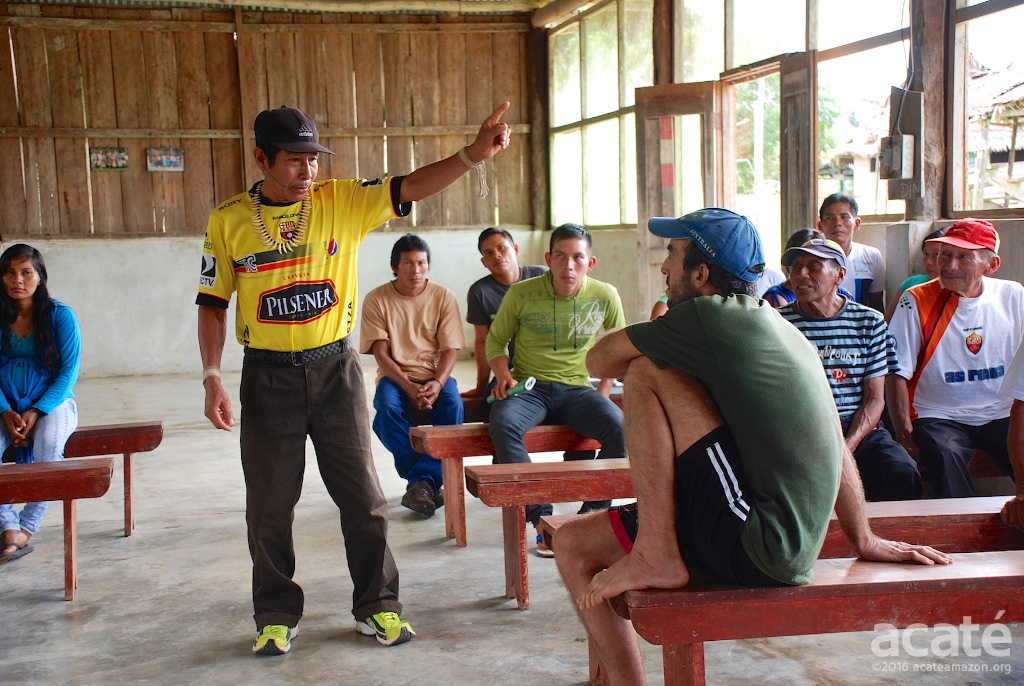
Rómulo‘s oratory about the importance of the Mapping Project was powerful and moving. © Acaté
After this introduction, the elder Rómulo stood and powerfully addressed the conference in formal Matsés oratory. He shared his experiences and his belief in the importance of the mapping initiative. Ancestral knowledge of their lands is no longer being handed down to the younger generations, he said, and rests only in the memories of the remaining elders. Tragically, most of the Matsés youth today only know the recent Spanish names of the rivers and waterways and their people’s timeless connection to the lands is at risk of being severed. Rómulo recounted how for three weeks he and Aaron traveled and camped together deep into the headwaters of the the upper Javari (Yaquerana) taking GPS points and recording corresponding Matsés names of all waterways, ancestral villages, burial sites, secluded mineral licks called ‘mactac’ that attract game animals and birds, and many other areas of vital cultural and ecological significance. Rómulo and Aaron documented the presence of old farm sites far beyond the official boundaries of titled Matsés lands that confirmed the historical precedent of prior indigenous land use.

The rainforests that the Matsés protect are one of the great cradles of life on our planet. © Acaté
After Rómulo’s rousing oratory, the assembly enthusiastically requested he continue his work before expanding the project throughout their territory with the other elders. The duration of, compensation for, and work schedule of this critical initiative over the next two years was agreed upon. Let us be clear on an extremely important and often misunderstood point by the outside world that is crucial for the Matsés. The only reason these globally significant forests are intact today is due to the Matsés fighting and dying to protect them against the incursions of outsiders! They fought off the rubber barons of old and modern day petroleum companies. These threats are ever-present, insidious and shifting. A fortune of petroleum lies beneath the very lands that Rómulo and Aaron mapped. As soon as the price of oil rises again on the global markets, extraction in remote lands will again be economically feasible and the threat of petroleum companies will re-emerge.
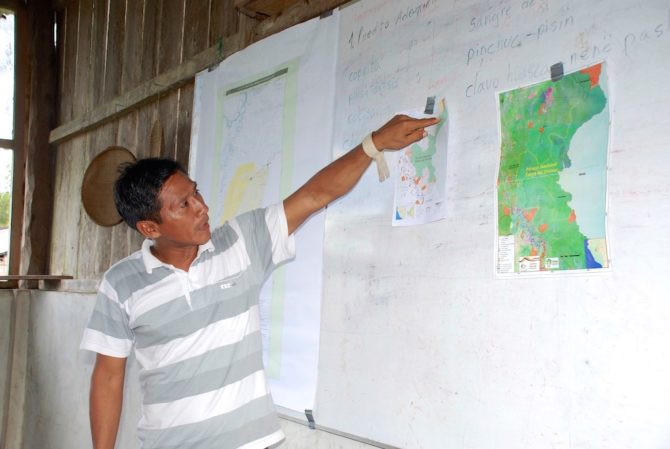
Wilder Flores, High Chief of the Matsés people, conferring with the assembled village chiefs regarding a dispute with the Peruvian government on agreements of the borders of their lands.© Acaté
While the current conservation trend of including indigenous people in decisions on their own lands is encouraging, there are continuing efforts to shift indigenous land to government control. This weakens the protection from extractive industries which are, in most countries, deeply entrenched at all levels of government. The focus of the Mapping Initiative is toward empowering the self-sufficiency of the greatest stakeholders, the Matsés indigenous people, to protect their own lands as their forefathers did before them.
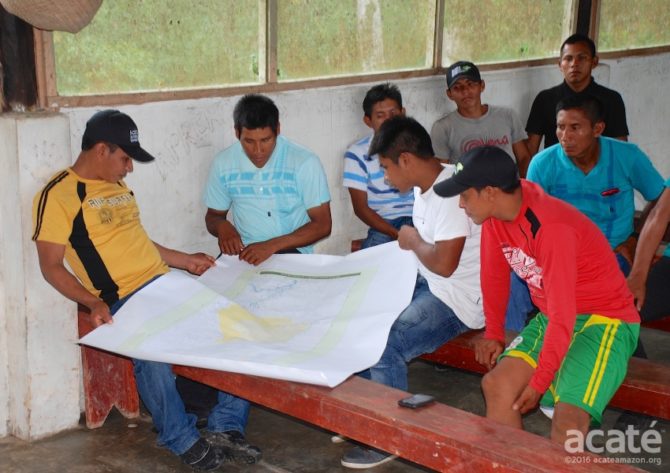
Rainforest protection begins and ends on the ground. © Acaté
Healing Forests: Medicinal Agroforestry
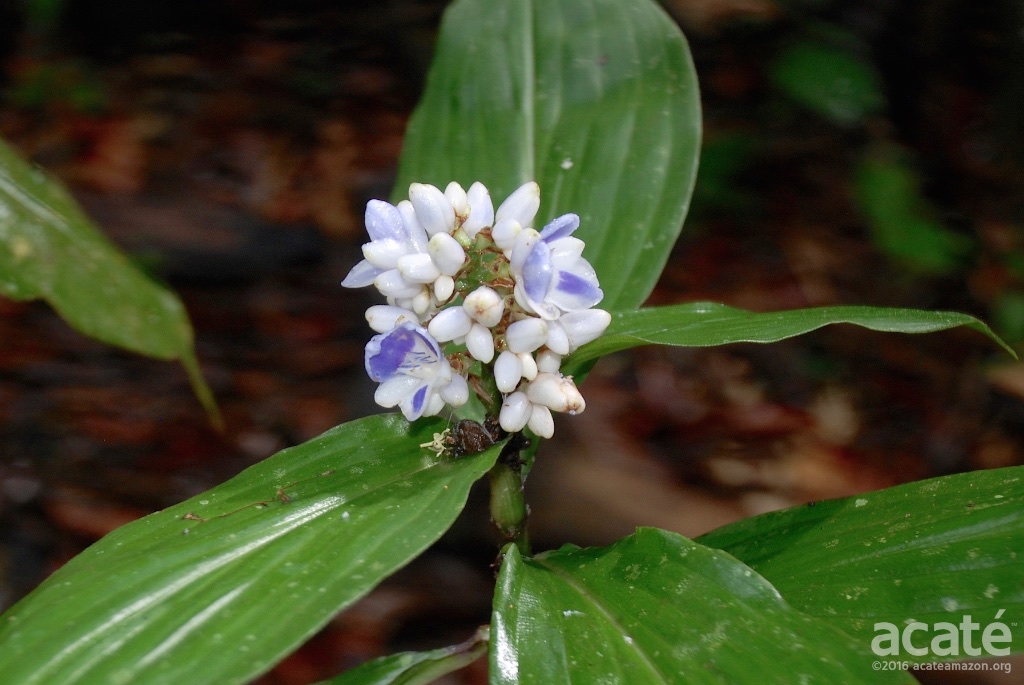
After a rainshower in the Healing Forest of Buen Peru © Acaté
The completion of the Encyclopedia was a historical and critical first step towards mitigating existential threats to Matsés’ healing wisdom and self-sufficiency. However, the Encyclopedia alone is insufficient to maintain their self-sufficiency as their healing systems are based on experience that can only be transmitted through long apprenticeships. In the earlier Apprentices Program, elder shamans—who were also Encyclopedia chapter authors—were accompanied in the forest by younger Matsés to learn the plants and assist in treating patients. The Matsés elders and Acaté decided to merge the Apprentices program with the Healing Forest project that is based on traditional Matsés agroforestry.
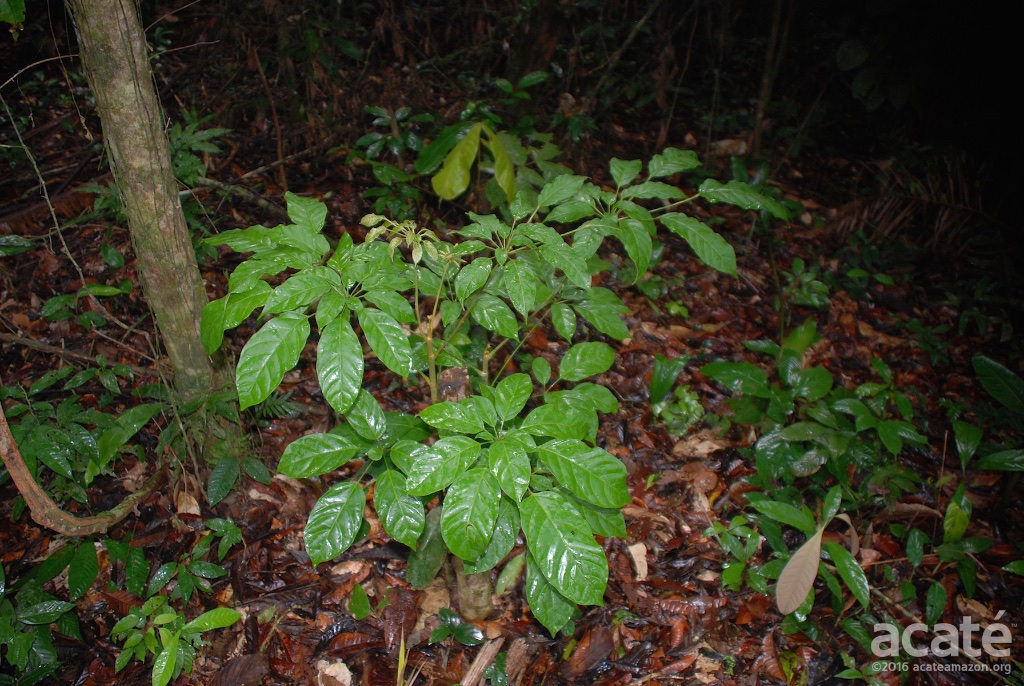
A sapling medicinal tree © Acaté
Collecting, planting and tending plants is the most effective way to really know them and the additional benefit of having the plants nearby, especially the rare ones, made the decision natural. The feedback at the conference confirmed that actually working with the plants in developing the medicinal healing forest for a month was the most efficient way to teach identification and applications. It also came up repeatedly that consulting the Encyclopedia is a vitally important means of reinforcing field instruction from the shamans. To continue the program in the upcoming year, we put together the schedule and selected the villages for the medicinal agroforestry sites. We were then invited to accompany the elder shamans to observe the Healing Forest agroforestry plots in the villages of Remoyacu and Buen Peru. Master Shaman Luis Dunu Jiménez from Estirón led the apprentices due to Roberto’s absence. As Maestro Luis led the apprentices down the path, he would begin by asking the name of a plant and its use. A remarkable exchange always followed. The mastery and enthusiasm of the participants was mind blowing, especially given that some of us outsiders who think we know at least something about plants were utterly lost!
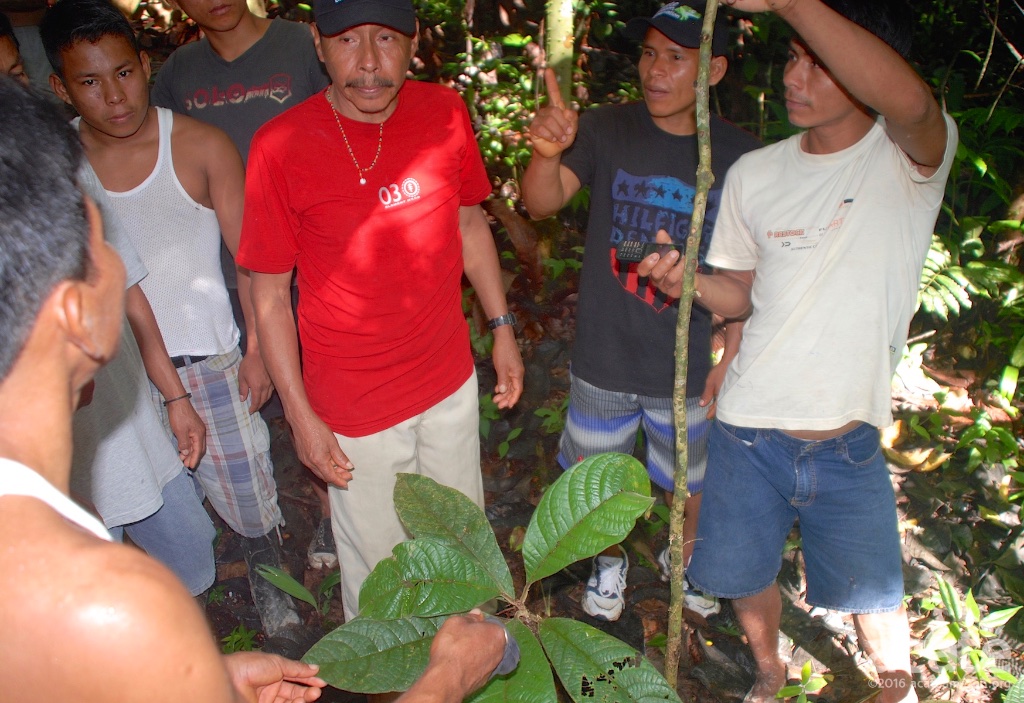
Question and answer session with medicinal plant master Lucho (in red) and the apprentices in the Healing Forest. Note one apprentice is using his cell phone to record Lucho’s teachings.© Acaté
The richness of the Matsés Healing Forest ecosystems is hard to convey. Imagine walking for thirty minutes on a rainforest trail winding in a figure eight path in proximity to the village surrounded by a constellation of hundreds of plants with medicinal importance in such abundance that truly careful attention must be made at all times to avoid clumsily stepping on a group of seedlings or small sapling. At a point, we lost count after over eighty species of medicinal plants, trees, small herbs, vines, epiphytes, and understory plants were examined. Each plant was transplanted and cultivated by the Matsés in a zone according to its ecological demands, underscoring indigenous mastery of agroforestry. Epiphytes were grafted onto the proper host trees, fledgling seedlings protected with scaffolding and planted in pockets with just right amount of sun exposure. We saw only one or two plants that had not successfully establish. Potential dangers to seedlings in the rainforest are myriad and include leaf-cutter ants, overgrowing climbers, erosion from heavy rains, trampling and foraging from animals.

Grafted medicinal epiphyte, Healing Forest, Remoyacú © Acaté
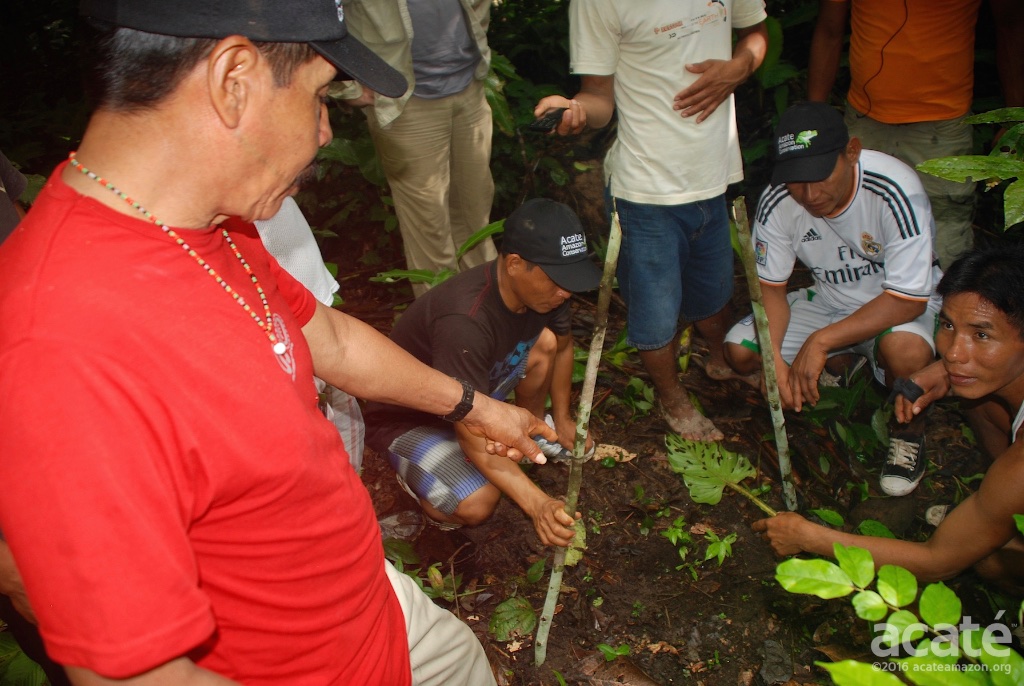
Lucho directing care to the apprentices of seedlings protected by scaffolding.© Acaté
It is important to emphasize that Healing Forests are not a new introduction but a restoration of traditional Matsés agroforestry. As we visited the Healing Forest outside the village of Buen Peru, Acaté’s own Segundo Shabac Reyna Perez, who coordinated the joint projects in Remoyacú and Buen Peru and who is studying the medicines himself, explained how this parcel of land was originally set-aside decades ago by his father-in-law as a medicinal plant conservatory. Normally, this stretch of land, with its topography and proximity to village, would be ideal for agriculture and cleared for a jungle farm. Segundo then reached over to show two large established epiphytic plants that had been fixed to the trunk of tree many years ago ago by his father-in-law. For generations, Healing Forests supplied the Matsés communities with sustainably sourced medicinal plants to treat urgent health needs.

Segundo demonstrating a medicinal plant (two epiphytes grafted on base trunk) planted many years ago by his father-in-law in Buen Peru. © Acaté
On encountering a rare plant on a trek hours or days from a village, shamans would take a cutting to re-establish the plant in these gardens near their village. Seeing this process with our own eyes made us realize once again how the Matsés have shaped the very composition of the forest over time. Sadly, the creation and maintenance of Healing Forests was disrupted for over two decades under the influence of missionaries before the onset of Acaté’s work.
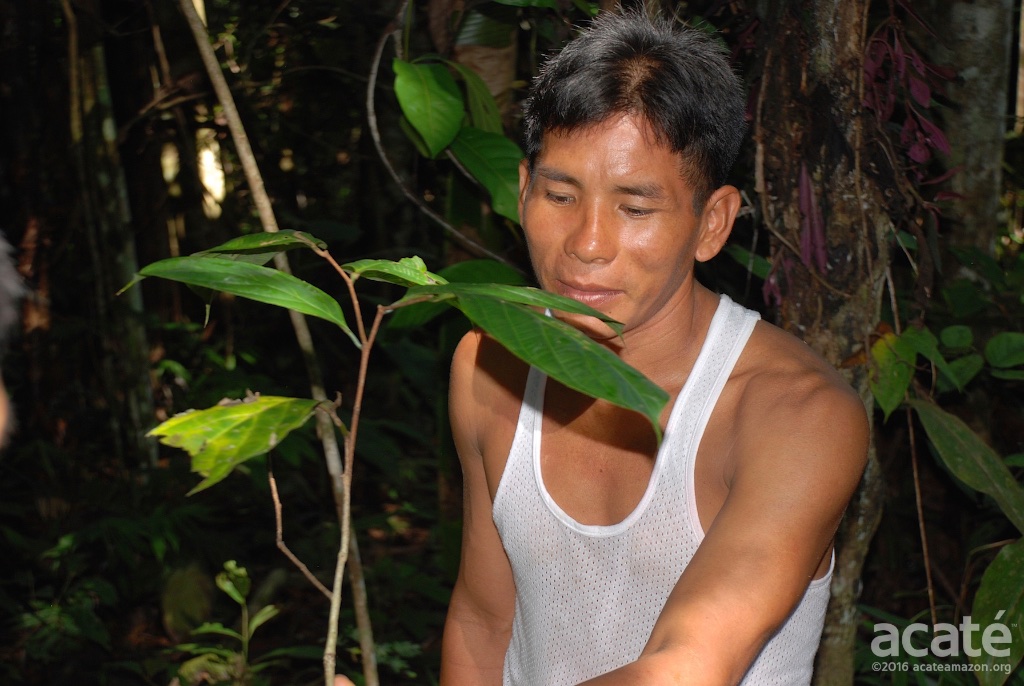
Apprentice Mariano Lopez Rengifo from Buen Peru. © Acaté
During our tour of the agroforestry sites, one young man and apprentice, Mariano Lopez Rengifo, stood out with his exceptional knowledge of plants. Acaté’s co-founders were so intrigued we sat down with him to hear his story. In the previous year’s conference, the Matsés decided to send shamans to communities that no longer had shamans. Buen Peru was selected to receive training from Master Healer Alberto Bai of Puerto Alegre, a distant village on the Yaquerana. Mariano told us that before studying with Maestro Alberto, he knew only of two plants, one of which was used to treat dogs. He said that his apprenticeship with Alberto was an awakening. He is developing a specialty in treating skin conditions,which are a scourge of lowland jungle settings. He would like to continue learning from Master Alberto because one day he hopes to become the resident healer of his community of Buen Peru, filling a long void. Mariano summed it up by telling Dr. Chris, “It takes time to become a shaman. Just as you spent years in school learning to use pharmaceuticals, my university is the jungle.” At the meeting, Matsés High Chief Wilder Gonzalez Flores proclaimed his intent during his tenure of leadership to see Healing Forests restored in all 14 Matsés villages.
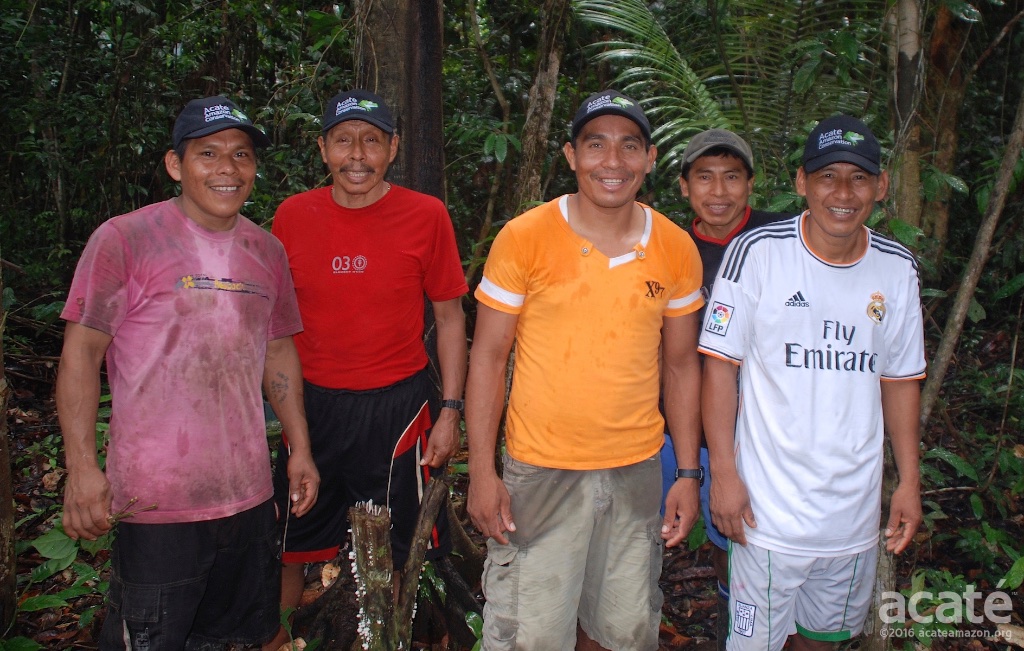
In the Healing Forest of Remoyacú © Acaté
Finding Unity

Dr. David Fleck of Acaté and Master Healer César Nacua Uaqui Canshë from Estirón © Acaté
The three-day meeting closed with statements from the Matsés and Acaté leadership. Matsés elder and shaman Antonio Jiménez eloquently described the consensus reached among the Matsés participants in regards to our projects. Gesturing with his hands, he said, “In project discussions, one side came with ideas, the other with different ideas, but in the meeting they came together in the middle to find unity.” Following conclusion of the formal proceedings, a four page letter was drafted and typed by the Matsés leadership outlining the points of the meeting and the agreed upon work-plan. Copies are being distributed to all 14 Matsés communities to ensure full transparency. In subsequent field updates, Acaté will present major developments on the sustainable agriculture front as well as other initiatives, including a new project launched by the Matsés elder women involving the marketing of Matsés friendship bracelets. Called uitsun, these are intricately crafted bracelets specific to the Matsés culture, woven from chambira palm fibers or home spun cotton.
Epilogue
Roberto’s leg still hurts as he heals from the secondary infections but he is recovering comfortably with his son in Remoyacú. Arturo is having terrible back pain and is still bed ridden. Earlier this month, we arranged for Arturo to be flown to Iquitos for medical evaluation at a clinic. His doctor expects that he will make a full recovery with a few more weeks of rest. At the meeting in Remoyacú, Acaté leadership set up a relief fund for Matsés medical emergencies that will be administered by the Matsés High Chief. The Matsés commonly face lack of funds necessary to travel to receive medical care in the city of Iquitos as well as to purchase medicines.
Join Us!
We need your help to continue our work, please consider making a donation today that will directly fund these important initiatives. All donations are tax-deductible and directly applied to realize our projects.
Acaté is an on-the-ground conservation organization that works directly in a true and transparent partnership with the Matsés indigenous people to maintain their self-sufficiency and way of life. The Matsés safeguard one of the great areas of rainforest on the planet, protecting an area of over 3 million acres in Perú alone and shielding some of the last remaining uncontacted tribes in voluntary isolation from unwanted encroachment from the outside world.
Follow our website and social media for more updates!

Matsés sub-chief, Felix Tümi Mënquë, son of Elder Shaman Arturo Potsad. © Acaté
